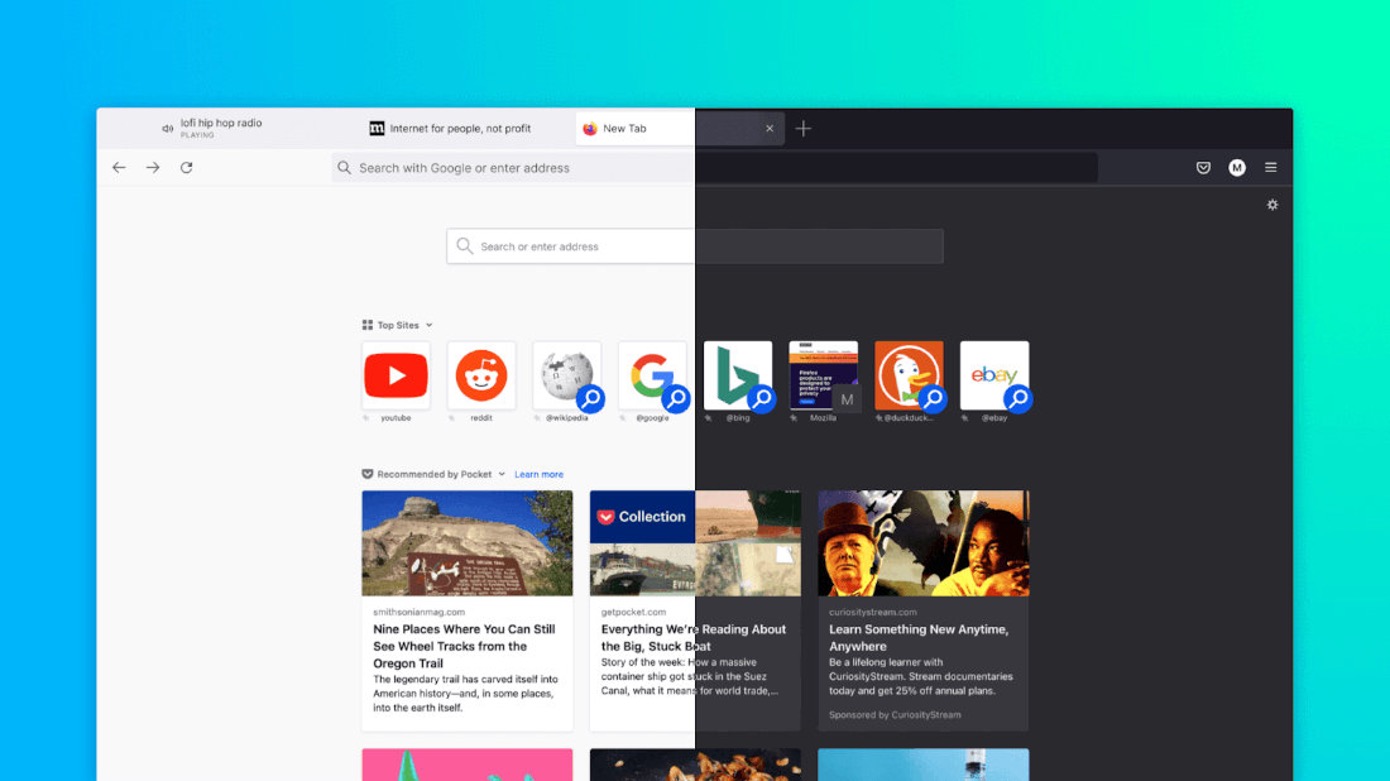Introduction
Have you ever found yourself longing for the simplicity and familiarity of an older version of Firefox? Perhaps you miss the layout, the features, or the overall user experience that you once cherished. Whether it's due to compatibility issues with certain extensions or a preference for a previous interface, the desire to revert to an old version of Firefox is not uncommon.
In this guide, we will walk you through the process of reverting to an older version of Firefox. While it's important to note that using an outdated browser version can pose security risks, we understand that there are valid reasons for wanting to do so. By following the steps outlined in this article, you can safely and effectively return to a previous iteration of Firefox, allowing you to recapture the browsing experience you've been yearning for.
So, if you're ready to embark on a journey back in time to a version of Firefox that holds a special place in your heart, let's dive into the step-by-step process of reverting to an old version of this beloved web browser.
Step 1: Uninstall the current version of Firefox
Before you can revert to an older version of Firefox, it's essential to uninstall the current version from your system. This process ensures a clean slate for the installation of the older version, minimizing potential conflicts and ensuring a smooth transition. Here's a detailed guide on how to uninstall the current version of Firefox:
-
Backup Your Data: Before proceeding with the uninstallation, it's advisable to back up your important browsing data, such as bookmarks, history, and saved passwords. This can be done by exporting your bookmarks and saving any essential data to an external location.
-
Open the Control Panel: On Windows, navigate to the Control Panel by clicking on the Start menu and searching for "Control Panel." On macOS, you can find the uninstallation option in the Applications folder.
-
Uninstall Firefox: In the Control Panel, locate the "Programs" or "Programs and Features" option, depending on your Windows version. Here, you will find a list of installed programs. Look for Mozilla Firefox in the list, right-click on it, and select "Uninstall." Follow the on-screen prompts to complete the uninstallation process.
-
Remove User Data: After uninstalling Firefox, it's recommended to remove any residual user data to ensure a clean installation of the older version. Navigate to the following directories and delete the associated folders:
- Windows: C:\Users\YourUserName\AppData\Local\Mozilla\Firefox
- macOS: /Users/YourUserName/Library/Application Support/Firefox
-
Restart Your System: Once the uninstallation process is complete, restart your computer to ensure that any remaining components of the current Firefox version are fully removed from your system.
By following these steps, you can effectively uninstall the current version of Firefox, paving the way for the installation of an older version. With this crucial first step completed, you're now ready to proceed to the next stage of the process: downloading the old version of Firefox.
Stay tuned for the next step, where we'll guide you through the process of acquiring the specific older version of Firefox that you wish to install.
Step 2: Download the old version of Firefox
Now that you've successfully uninstalled the current version of Firefox, the next step is to procure the specific older version of the browser that you wish to install. It's important to note that downloading software from unofficial sources can pose security risks, so it's advisable to obtain the old version of Firefox from a trusted and reputable archive.
Here's a detailed guide on how to download the old version of Firefox:
-
Identify the Desired Version: Begin by determining the exact version of Firefox that you want to revert to. Whether it's an earlier release with a particular feature set or a version known for its stability and compatibility with specific extensions, pinpointing the precise iteration is crucial.
-
Visit the Mozilla Archive: Mozilla maintains an official archive of older Firefox releases, providing a secure and reliable source for downloading previous versions. Navigate to the Mozilla Firefox Release Archive (https://ftp.mozilla.org/pub/firefox/releases/) to access a comprehensive repository of past Firefox releases.
-
Select the Version: Within the archive, you'll find a list of Firefox versions organized by release date. Locate the specific version you wish to download and click on the associated directory to view its contents.
-
Choose the Operating System: Once you've accessed the directory for your desired Firefox version, you'll find subdirectories for various operating systems, such as Windows, macOS, and Linux. Select the subdirectory corresponding to your operating system to proceed with the download.
-
Download the Installer: Within the operating system-specific subdirectory, you'll find the installer file for the chosen Firefox version. Click on the installer file to initiate the download process. Depending on your internet connection speed, the download should be completed shortly.
-
Verify the Integrity: After downloading the installer, it's advisable to verify the integrity of the file to ensure that it hasn't been tampered with. You can use checksum verification tools or compare the file's hash with the official values provided by Mozilla to confirm its authenticity.
By following these steps, you can securely download the old version of Firefox from a trusted source, ensuring that you obtain the specific iteration that aligns with your preferences and requirements. With the installer file in hand, you're now prepared to proceed to the next stage: installing the old version of Firefox.
Stay tuned for the upcoming step, where we'll guide you through the installation process, allowing you to seamlessly transition to the older Firefox version you've chosen.
Step 3: Install the old version of Firefox
With the old version of Firefox installer file at your disposal, you're now ready to embark on the installation process. Follow these steps to seamlessly transition to the older version of Firefox that you've chosen:
-
Run the Installer: Locate the downloaded installer file for the old version of Firefox and double-click on it to initiate the installation process. Depending on your operating system, you may encounter user account control prompts or authorization requests. Follow the on-screen instructions to proceed with the installation.
-
Choose Installation Options: During the installation process, you may be presented with various options, such as the installation directory and shortcut creation. Customize these settings according to your preferences and system requirements. For most users, the default installation options are suitable.
-
Complete the Installation: Once you've configured the installation options, proceed with the installation process. The installer will extract the necessary files and components, setting up the older version of Firefox on your system. This may take a few moments, depending on your system's performance.
-
Launch the Old Version: After the installation is complete, you can launch the old version of Firefox from the desktop shortcut or the installation directory. Upon launching the older iteration, take a moment to revel in the familiar interface and features that you've been longing for.
-
Verify Functionality: Upon launching the old version of Firefox, take the time to ensure that it functions as expected. Test its compatibility with your preferred extensions, visit websites to confirm its browsing capabilities, and verify that essential features are functioning seamlessly.
By following these steps, you can successfully install the old version of Firefox, allowing you to relish the browsing experience that resonates with you. With the older iteration now installed on your system, you're one step closer to rekindling the browsing nostalgia that you've been yearning for.
Stay tuned for the next step, where we'll delve into the process of disabling automatic updates to prevent the older version of Firefox from being automatically updated to the latest release.
Step 4: Disable automatic updates
Now that you have successfully installed the old version of Firefox, it's crucial to prevent automatic updates from overriding your preferred iteration with the latest release. Disabling automatic updates ensures that your chosen version remains intact, preserving the interface, features, and compatibility that prompted you to revert to an older Firefox version. Here's a detailed guide on how to disable automatic updates in Firefox:
-
Access the Options Menu: Launch the old version of Firefox and click on the menu icon located in the top-right corner of the browser window. From the dropdown menu, select "Options" (Windows) or "Preferences" (macOS) to access the settings panel.
-
Navigate to the Advanced Options: Within the settings panel, navigate to the "Advanced" section. This is where you'll find the advanced options for configuring Firefox's settings and preferences.
-
Select the Update Tab: In the advanced settings, locate and click on the "Update" tab. This tab contains options related to Firefox's update settings, including the ability to disable automatic updates.
-
Disable Automatic Updates: Within the Update tab, you'll find the option to disable automatic updates. Uncheck the box next to "Automatically install updates (recommended: improved security)" or a similar option, depending on the specific version of Firefox. This action effectively disables automatic updates, ensuring that your chosen version remains static.
-
Confirm the Changes: After disabling automatic updates, it's essential to confirm the changes by clicking on the "OK" or "Apply" button within the settings panel. This ensures that your preference to disable automatic updates is saved and implemented.
-
Verify the Update Status: To double-check that automatic updates are disabled, you can revisit the Update tab within the settings panel. Ensure that the option to automatically install updates remains unchecked, indicating that automatic updates are indeed disabled.
By following these steps, you can effectively disable automatic updates in the old version of Firefox, safeguarding your preferred iteration from being automatically updated to the latest release. With automatic updates disabled, you can enjoy a stable and consistent browsing experience, free from unexpected interface changes or feature updates.
With the completion of this crucial step, you have successfully reverted to an older version of Firefox and secured it against automatic updates. Embrace the familiarity and nostalgia of your chosen iteration, knowing that it will remain unchanged as you explore the web.
Now that you've disabled automatic updates, you're all set to relish the browsing experience offered by the older version of Firefox, tailored to your preferences and requirements. Enjoy your journey back in time to the Firefox version that holds a special place in your browsing history.
Conclusion
Congratulations on successfully reverting to an older version of Firefox! By following the comprehensive steps outlined in this guide, you've embarked on a journey back in time to a Firefox iteration that resonates with your browsing preferences and requirements. As you embrace the familiar interface, features, and overall user experience of the older version, it's important to acknowledge the significance of this transition.
Reverting to an old version of Firefox isn't merely about nostalgia; it's about reclaiming a browsing environment that aligns with your workflow, extension compatibility, and overall browsing habits. Whether it's the layout, functionality, or specific features that drew you back to a previous iteration, your decision to do so reflects the personalized nature of the browsing experience.
By uninstalling the current version, obtaining the desired older version from a trusted source, and seamlessly installing it on your system, you've taken deliberate steps to curate a browsing environment that caters to your unique preferences. Furthermore, by disabling automatic updates, you've safeguarded your chosen version, ensuring that it remains static and consistent, free from unexpected changes or feature updates.
As you navigate the web using the older version of Firefox, take a moment to appreciate the seamless compatibility with your preferred extensions, the familiar layout that streamlines your browsing activities, and the overall sense of comfort that comes with using a version that feels tailor-made for your needs.
It's important to note that while reverting to an older version of Firefox can provide a sense of familiarity and stability, it's essential to prioritize security. Older browser versions may lack the latest security updates and enhancements, potentially exposing your browsing activities to security risks. Therefore, it's advisable to exercise caution and consider the implications of using an outdated browser in today's dynamic online landscape.
In conclusion, the process of reverting to an older version of Firefox is a testament to the personalized nature of the browsing experience. Your deliberate choice to return to a specific iteration reflects the value of customization and the significance of a browsing environment that resonates with your individual preferences. As you immerse yourself in the familiar interface and features of the older version, cherish the browsing nostalgia while remaining mindful of the evolving security landscape.
Embrace the browsing journey that led you back to a cherished Firefox version, and may your browsing experiences be enriched by the seamless compatibility and familiarity that your chosen iteration offers. Happy browsing!

























